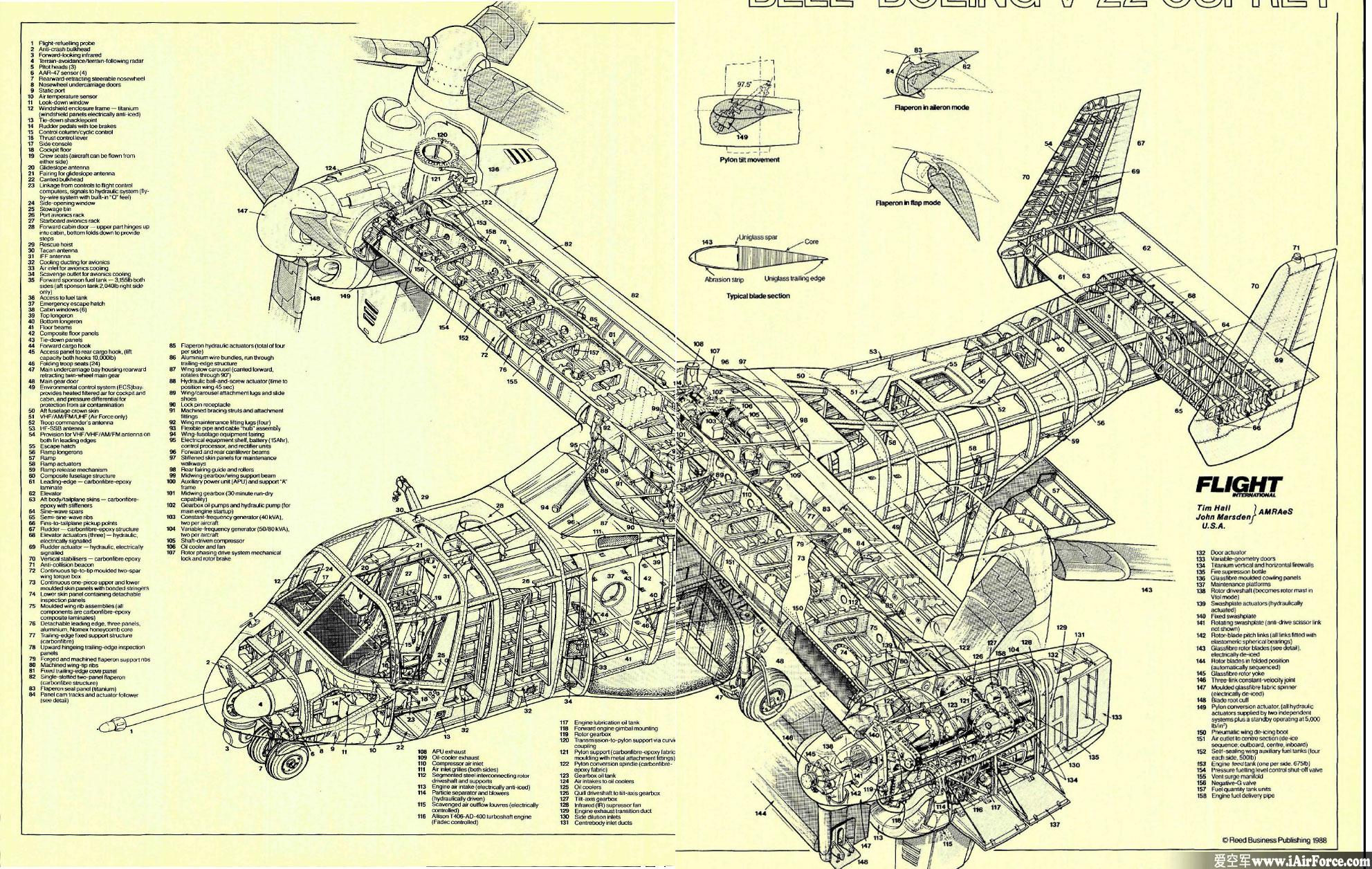V-22 Osprey






The Osprey is the world's first production tiltrotor aircraft, with one three-bladed proprotor, turboprop engine, and transmission nacellemounted on each wingtip. It is classified as a powered lift aircraft by the Federal Aviation Administration.For takeoff and landing, it typically operates as a helicopter with the nacelles vertical and rotors horizontal. Once airborne, the nacelles rotate forward 90° in as little as 12 seconds for horizontal flight, converting the V-22 to a more fuel efficient, higher speed turboprop aircraft. STOL rolling-takeoff and landing capability is achieved by having the nacelles tilted forward up to 45°. Composite materials make up 43% of the V-22's airframe. The proprotors blades also use composites
The V-22's two Rolls-Royce AE 1107C engines are connected by drive shafts to a common center gearbox so that one engine can power both proprotors if an engine failure occurs.However, if a proprotor gearbox fails that proprotor cannot be feathered, and both engines must be stopped before an emergency landing. The aircraft's autorotation characteristics are poor partly because the rotors have low inertia. Boeing has stated the V-22 design loses 10% of its vertical lift over a Tiltwing design when operating in helicopter mode because of airflow resistance due to the wings, but that the Tiltrotor design has better short takeoff and landing performance
The V-22 has triple-redundant fly-by-wire flight control systems. With the nacelles pointing straight up in conversion mode at 90° the flight computers command the aircraft to fly like a helicopter, with cyclic forces being applied to a conventional swashplate at the rotor hub. With the nacelles in airplane mode (0°) the flaperons, rudder, and elevator fly the aircraft like an airplane. This is a gradual transition and occurs over the rotation range of the nacelles. The lower the nacelles, the greater effect of the airplane-mode control surfaces. The nacelles can rotate past vertical to 97.5° for rearward flight. The aircraft also has computerized damage control that automatically isolates damaged elements.
General characteristics
- Crew: Four (pilot, copilot and two flight engineers/crew chiefs)
- Capacity:
- 24 troops (seated), 32 troops (floor loaded), or
- 20,000 lb (9,070 kg) of internal cargo, or up to 15,000 lb (6,800 kg) of external cargo (dual hook)
- 1× Growler light internally transportable ground vehicle
- Length: 57 ft 4 in (17.5 m)
- Rotor diameter: 38 ft 0 in (11.6 m)
- Wingspan: 45 ft 10 in (14 m)
- Width with rotors: 84 ft 7 in (25.8 m)
- Height: 22 ft 1 in/6.73 m; overall with nacelles vertical (17 ft 11 in/5.5 m; at top of tailfins)
- Disc area: 2,268 ft² (212 m²)
- Wing area: 301.4 ft² (28 m²)
- Empty weight: 33,140 lb (15,032 kg)
- Loaded weight: 47,500 lb (21,500 kg)
- Max. takeoff weight: 60,500 lb (27,400 kg)
- Powerplant: 2 × Rolls-Royce Allison T406/AE 1107C-Liberty turboshafts, 6,150 hp (4,590 kW) each
Performance
- Maximum speed: 275 knots (509 km/h, 316 mph) at sea level / 305 kn (565 km/h; 351 mph) at 15,000 ft (4,600 m)
- Cruise speed: 241 knots (277 mph, 446 km/h) at sea level
- Stall speed: 110 knots (126 mph) in airplane mode
- Range: 879 nmi (1,011 mi, 1,627 km)
- Combat radius: 390 nmi (426 mi, 722 km)
- Ferry range: 1,940 nmi (2,230 mi, 3,590 km) with auxiliary internal fuel tanks
- Service ceiling: 25,000 ft (7,620 m)
- Rate of climb: 2,320 – 4,000 ft/min (11.8 m/s)
- Glide ratio: 4.5:1
- Disc loading: 20.9 lb/ft² at 47,500 lb GW (102.23 kg/m²)
- Power/mass: 0.259 hp/lb (427 W/kg)
Comments
Post a Comment